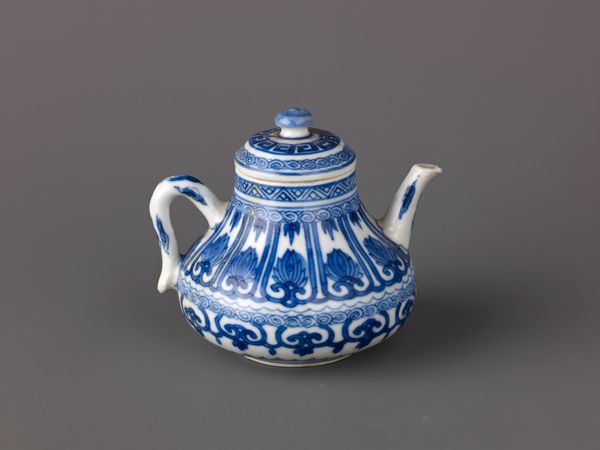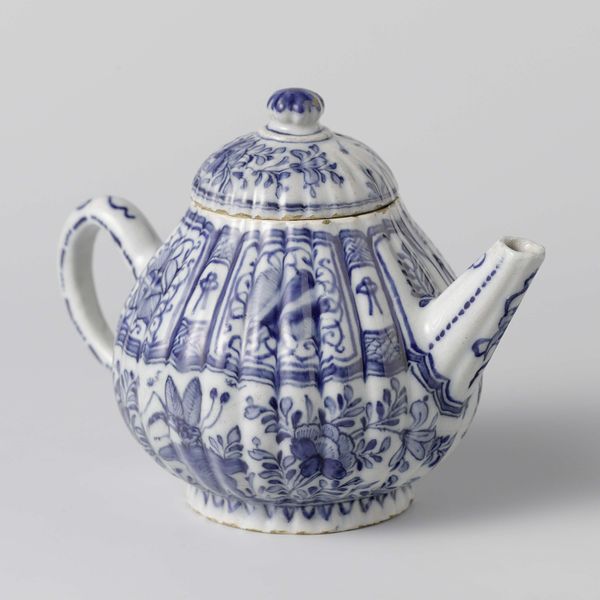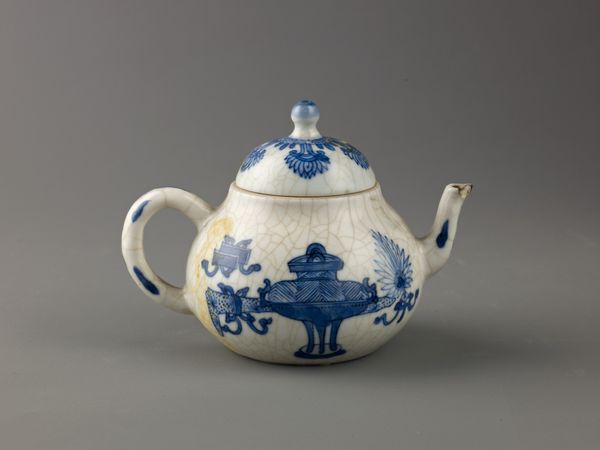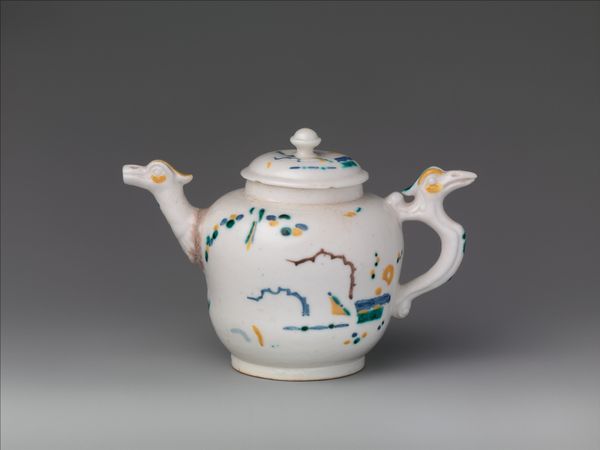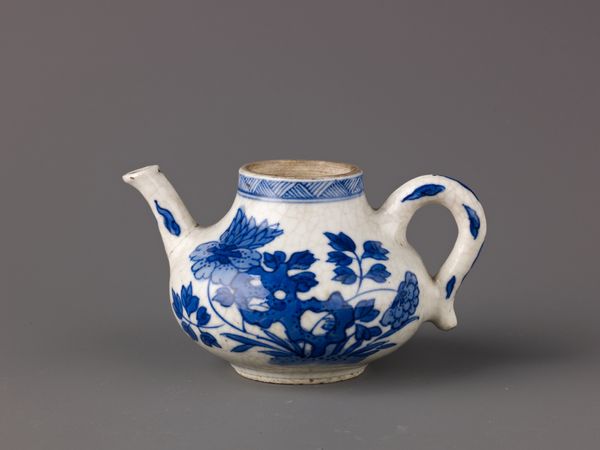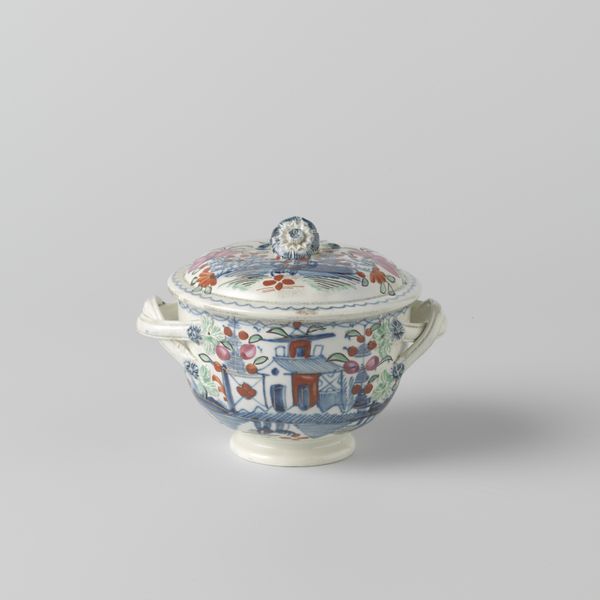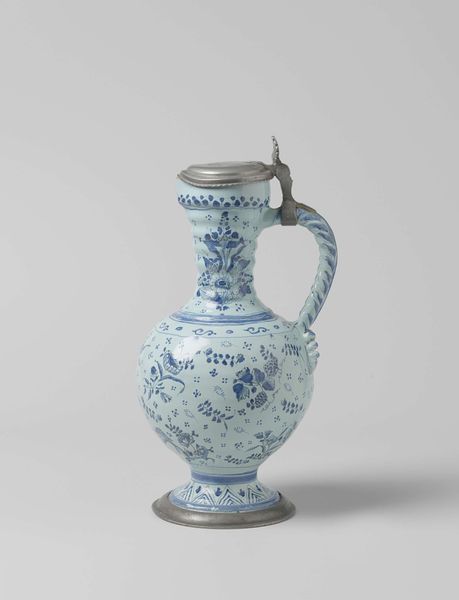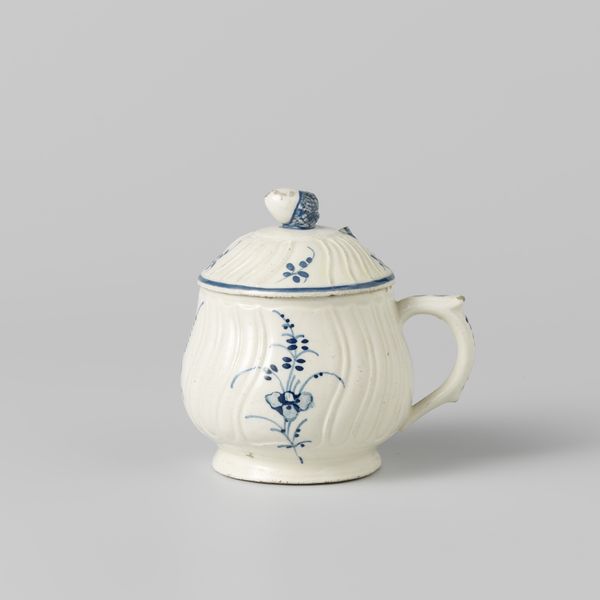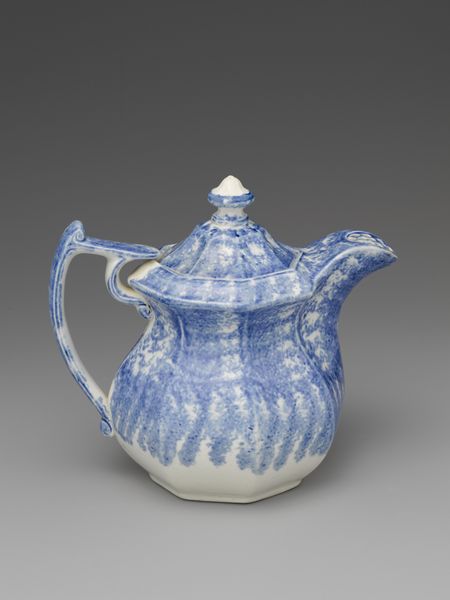
Teapot with stylized lotus scrolls, ruyi-motif and ornamental borders c. 1700 - 1724
0:00
0:00
ceramic, earthenware
#
asian-art
#
ceramic
#
earthenware
Dimensions: height 5.1 cm, diameter 3.2 cm, diameter 6.3 cm, diameter 3.6 cm, length 7.8 cm
Copyright: Rijks Museum: Open Domain
Editor: Here we have a lovely little earthenware teapot, dating from the early 18th century. The museum attributes it to an anonymous maker, and it's decorated with these very charming lotus scroll and ruyi patterns in blue. What can you tell me about the making and meaning of such an object? Curator: I think it is critical to acknowledge this teapot as a product of cultural exchange. Its material – earthenware – and painted decorations, demonstrate the commodification of artistic traditions through the act of cultural imitation and adaptation to market forces. Let's think about where and how the clay was sourced, how the pigments were made, who exactly designed these decorative motifs? Editor: So you’re emphasizing the globalized aspect? The piece is in the Rijksmuseum in the Netherlands… Was it made for export? Curator: Exactly. Who had access to this type of imported tea? Understanding the materials, the means of its production, the global trade networks at play, that’s crucial for situating an object like this historically. Who owned this teapot and what role did it play in their ritual of daily consumption? It certainly implies access to trade routes, doesn't it? What sort of economic power is materialized in the piece? Editor: I see your point. It’s not just a pretty thing; it’s about economic power and international exchange expressed through design and the process of production. Curator: Precisely. This wasn't created in a vacuum. It’s tangible evidence of material exchange and labor systems, all embodied in something as seemingly simple as a teapot. Editor: It’s fascinating to think of the teapot as part of global resource flows instead of just a display of craftsmanship! Thank you!
Comments
No comments
Be the first to comment and join the conversation on the ultimate creative platform.

